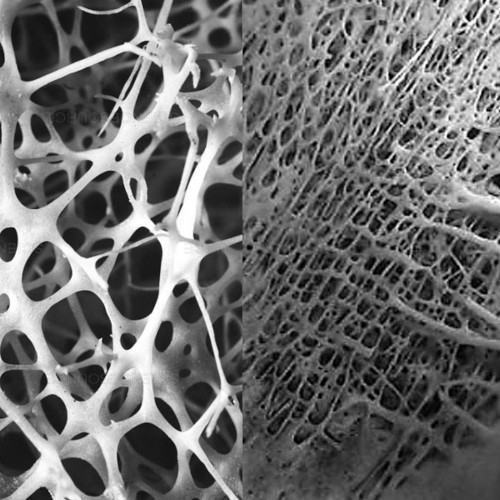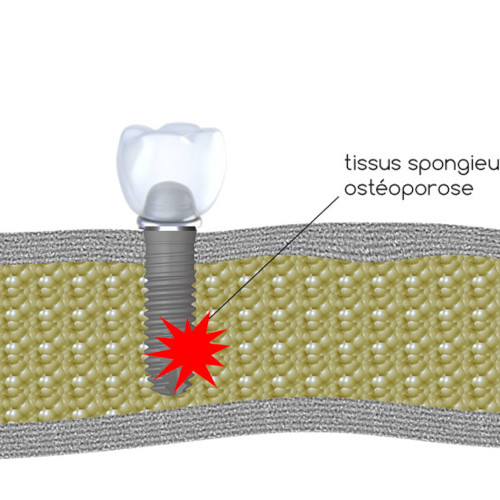Osteoporosis affects nearly 30% of postmenopausal women but also men. Osteoporosis also has consequences on teeth and teeth, oral health in general and dental implants. One type of dental implant that overcomes this problem, is the basal implant. Its physiological relationship with the bone tissue is mechanical. The retention of the basal dental implant in the cortical area of the bone makes it possible to treat patients suffering from ‘osteoporosis except in certain special cases such as bisphosphonate treatment.
What is osteoporosis?
Osteoporosis is a degenerative disease associated with aging that is characterized by a decrease in bone density in its spongy part. The bone becomes less resistant. The spongy part of the bone is the part of the bone which gives it elasticity and resistance by offering it the power of torsion. This part has a metabolic function, that is to say, that cells die and others replace them. On the contrary, the cortical part of the bone has a mechanical function.
Osteoporosis has the effect of preventing cell regeneration. Bone will therefore deteriorate with age.

Effects of osteoporosis on teeth
Osteoporosis causes not only harmful consequences on the skeleton, but osteoporosis also leads to serious consequences on the teeth:
People with osteoporosis often have problems with tooth loosening. This bone loss leads to the mobility of the teeth and periodontal disease can then progress more quickly.
Treatments against osteoporosis
As a first step, to prevent osteoporosis and slow its progression, doctors will prescribe a diet rich in calcium and vitamin D. When the disease has set in, the doctor may prescribe the following treatments:
- Bisphosphonates
- Raloxifene
- Strontium ranelate
- Teriparatide
- Denosumab
Below we will concentrate on the analysis of interactions of certain molecules on the placement of dental implants.
Bisphosphonates and necrosis of the jaw
Certain treatments for osteoporosis, including bisphosphonates, can cause risks to oral health and the fitting of dental implants. Taking bisphosphonates can cause spontaneous fractures when dental implants are placed. Here is a non-exhaustive list of factors aggravating the risks (linked to taking bisphosphonates).
- Taking by injection prolonged over time
- Infections
- Dental extractions and avulsions
- Treatment with corticosteroid base
- Diabetes
- Periodontal disease
- Smoking
The placement of dental implants (of any type) will not be recommended if you are undergoing treatment with bisphosphonate or diphosphonate, except when the risk of fracture is such that it is not possible to delay the onset of processing.
Dental implants and osteoporosis: What are the risks?
As mentioned above, the so-called classic (or traditional) dental implant can be a risky procedure in patients with osteoporosis. A (classic) dental implant is supposed to osteo integrate into the spongy tissue of bone due to a rough surface. In patients with osteoporosis, this part of the tissue regenerates more slowly than it degrades, causing porosity and weakening of this tissue. severe stress, due to chewing, is more likely to be mobile and therefore to be affected by peri-implantitis (infection of the dental implant). The risk of rejection is therefore greatly increased. Let us now see how the BAx basal dental implant can treat patients with osteoporosis without increasing the risk of rejection.

Basal dental implant: For patients with osteoporosis
The basal implant unlike the classic dental implant benefits from a retention called mechanical . Its smooth surface and spiral shape allow it to anchor itself in the cortex like a screw. No metabolic function is therefore involved. Good or poor quality of spongy tissue does not affect the success of the test. treatment (Cf: IIR study on the integration of bicortical implants) In addition, its prosthetic protocol distributes the chewing forces over all the dental implants placed, limiting the risk of microlesions and fractures.

